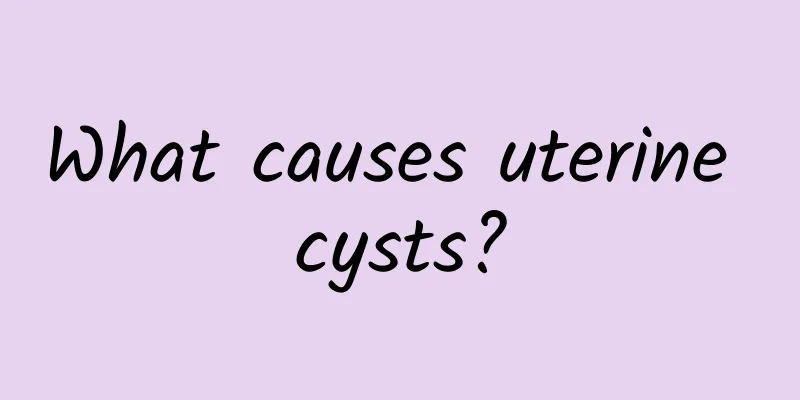What causes chocolate cysts?

|
Under normal circumstances, the endometrium of a woman grows in the uterine cavity. With the arrival of menstruation every month, it will fall off and then start to thicken and grow again. However, since the endometrium begins to grow in the ovaries of women, this part of the endometrium will not leave during the menstrual period. Although the ovaries are small, they are the key parts for producing eggs and ovulation, secreting hormones, and balancing endocrine. They often occur in the age of severe endocrine disorders. Therefore, they are associated with endocrine disorders. Moreover, if you get angry during menstruation, it may cause the menstruation to stop, causing the impurities to be unable to be discharged, and forming cysts in the ovaries. Although the ovaries are small, they are the key parts for producing eggs and ovulation, secreting hormones, and balancing endocrine. They often occur in the age of severe endocrine disorders. Therefore, they are associated with endocrine disorders. Moreover, if you get angry during menstruation, it may cause the menstruation to stop, causing the impurities to be unable to be discharged, and forming cysts in the ovaries. Chocolate cyst, also known as ovarian endometriosis cyst, is a disease caused by the endometrium "crossing the ocean" and "immigrating" to the ovary. It is the most common type of endometriosis and is essentially different from the tumor-like ovarian cyst. After the endometrium "immigrates" to the ovary, it is still affected by the cyclical effects of ovarian sex hormones. When menstruation comes, the ectopic endometrium "residing" in the ovary will also have "menstrual"-like bleeding. The "menstrual blood" cannot be discharged from the body and has to be retained in the ovary. The ectopic endometrium shed in the "menstrual blood" continues to be planted in the ovary like a seed. This cycle repeats itself over and over again, month after month, year after year. The "menstrual blood" retained in the ovary accumulates more and more, forming a cyst from small to large, which is medically called "ovarian endometriosis cyst". Because the blood in the cyst is old blood that has been retained for a long time and looks like chocolate paste, it is also called "chocolate cyst". As the course of chocolate cysts prolongs, the blood in the cysts continues to increase, and the cyst volume also increases. When there is too much blood in the cyst cavity and the pressure is too high, the weak part of the cyst wall can be broken, and the cyst spontaneously ruptures, and some of the blood in the cyst flows out. After the pressure is reduced, the cyst wall rupture can often heal on its own. |
<<: Surgical procedures for patients with chocolate cysts
>>: Does compression of chocolate cyst hurt? What are the hazards of chocolate cyst?
Recommend
Early detection of symptoms of vulvar leukoplakia can help patients
Vulvar leukoplakia is a common female disease tha...
Snacks Explosion Card! Do not exceed 200 calories per day
New Year snacks are tempting, but because they ar...
How long can you touch cold water after an abortion?
How long can you touch cold water after an aborti...
How miscarriage occurs
There are many things that can cause miscarriage ...
Why do nipples itch after abortion? 4 reasons for nipples itch after abortion
After abortion, the breasts may have mild itching...
Expertise in miscarriage diagnosis
With the quickening pace of life, women's phy...
How long does it take to recover naturally after laparoscopic ectopic pregnancy surgery?
The time it takes to recover naturally after lapa...
How to treat cervical erosion in women? How to cure cervical erosion? How to take care of patients with cervical erosion?
When it comes to cervical erosion, a gynecologica...
Can female cervical erosion be cured? These methods are the most effective in treating cervical erosion
Cervical erosion is a very common gynecological d...
Is bacterial vaginosis dangerous?
Fungal vaginitis is not unfamiliar to everyone. D...
What to eat to regulate early menstruation Four dietary treatments for early menstruation
Female friends are often prone to endocrine disor...
What is the basis for charging for ovarian cyst surgery?
Before choosing the right ovarian cyst surgery, w...
Forward bends improve flexibility, reduce fat, and relieve back pain ~ 15 unexpected benefits
Do you often feel pain in your lower back and you...
Why is it that female cervical erosion cannot be cured for a long time? There are three reasons why female cervical erosion cannot be cured.
It is quite common for women to suffer from cervi...
Ovarian cyst is 11 cm in size. What are the symptoms and how to treat it?
What are the symptoms of an ovarian cyst that is ...









